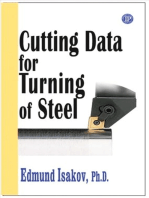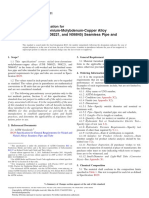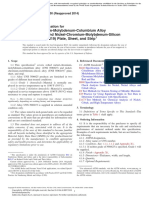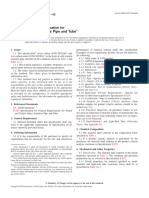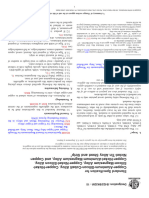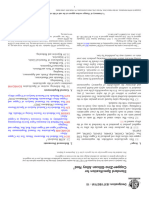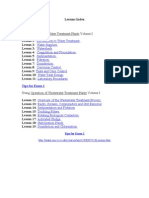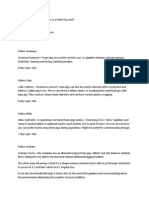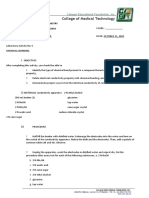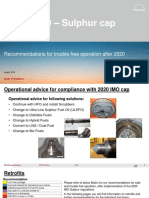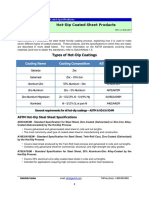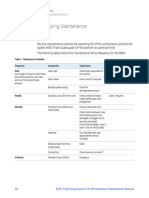0 ratings0% found this document useful (0 votes)
5 viewsPDFsam - B 425 - 11
PDFsam - B 425 - 11
Uploaded by
mike.jensen0581Copyright:
© All Rights Reserved
Available Formats
Download as PDF, TXT or read online from Scribd
PDFsam - B 425 - 11
PDFsam - B 425 - 11
Uploaded by
mike.jensen05810 ratings0% found this document useful (0 votes)
5 views5 pagesOriginal Title
PDFsam_B 425 - 11
Copyright
© © All Rights Reserved
Available Formats
PDF, TXT or read online from Scribd
Share this document
Did you find this document useful?
Is this content inappropriate?
Copyright:
© All Rights Reserved
Available Formats
Download as PDF, TXT or read online from Scribd
Download as pdf or txt
0 ratings0% found this document useful (0 votes)
5 views5 pagesPDFsam - B 425 - 11
PDFsam - B 425 - 11
Uploaded by
mike.jensen0581Copyright:
© All Rights Reserved
Available Formats
Download as PDF, TXT or read online from Scribd
Download as pdf or txt
You are on page 1of 5
Designation: B425 − 11
Standard Specification for
Ni-Fe-Cr-Mo-Cu Alloy (UNS N08825, UNS N08221, and
UNS N06845) Rod and Bar1
This standard is issued under the fixed designation B425; the number immediately following the designation indicates the year of
original adoption or, in the case of revision, the year of last revision. A number in parentheses indicates the year of last reapproval. A
superscript epsilon (´) indicates an editorial change since the last revision or reapproval.
1. Scope* E29 Practice for Using Significant Digits in Test Data to
1.1 This specification 2 covers nickel-iron-chromium- Determine Conformance with Specifications
molybdenum-copper alloy (UNS N08825, UNS N08221, and E1473 Test Methods for Chemical Analysis of Nickel,
UNS N06845)3 in the form of hot-finished and cold-drawn Cobalt, and High-Temperature Alloys
rounds, squares, hexagons, and rectangles.
3. Terminology
1.2 The values stated in inch-pound units are to be regarded
as standard. The values given in parentheses are mathematical 3.1 Definitions of Terms Specific to This Standard:
conversions to SI units that are provided for information only 3.1.1 bar, n—material of rectangular (flats), hexagonal, or
and are not considered standard. square solid section up to and including 10 in. (254 mm) in
width and 1⁄8 in. (3.2 mm) and over in thickness in straight
1.3 The following precautionary caveat pertains only to the lengths.
test methods portion, Section 12, of this specification: This 3.1.1.1 Discussion—Hot-worked rectangular bar in widths
standard does not purport to address all of the safety problems, 10 in. (254 mm) and under may be furnished as hot-rolled plate
if any, associated with its use. It is the responsibility of the user with sheared or cut edges in accordance with Specification
of this standard to become familiar with all hazards including B424, provided the mechanical property requirements of this
those identified in the appropriate Material Safety Data Sheet specification are met.
(MSDS) for this product/material as provided by the
manufacturer, to establish appropriate safety and health 3.1.2 rod, n—material of round solid section furnished in
practices, and determine the applicability of regulatory limi- straight lengths.
tations prior to use.
4. Ordering Information
2. Referenced Documents 4.1 It is the responsibility of the purchaser to specify all
2.1 ASTM Standards:4 requirements that are necessary for the safe and satisfactory
B424 Specification for Ni-Fe-Cr-Mo-Cu Alloy (UNS performance of material ordered under this specification.
N08825, UNS N08221, and UNS N06845) Plate, Sheet, Examples of such requirements include, but are not limited to,
and Strip the following:
B880 Specification for General Requirements for Chemical 4.1.1 ASTM designation and date of issue,
Check Analysis Limits for Nickel, Nickel Alloys and 4.1.2 UNS number,
Cobalt Alloys 4.1.3 Section—Rod (round) or bar (square, hexagonal, or
E8 Test Methods for Tension Testing of Metallic Materials rectangular),
4.1.4 Dimensions, including length,
4.1.5 Condition (see Appendix X1),
1
This specification is under the jurisdiction of ASTM Committee B02 on 4.1.6 Finish (see Appendix X1),
Nonferrous Metals and Alloys and is the direct responsibility of Subcommittee
B02.07 on Refined Nickel and Cobalt and Their Alloys.
4.1.7 Quantity—Feet (or metres) or number of pieces,
Current edition approved Oct. 1, 2011. Published November 2011. Originally 4.1.8 Certification—State if certification is required (Sec-
approved in 1964. Last previous edition approved in 2009 as B425 – 99 (2009). tion 15),
DOI: 10.1520/B0425-11. 4.1.9 Samples for Product (Check) Analysis—State whether
2
For ASME Boiler and Pressure Vessel Code applications, see related Specifi-
cation SB-425 in Section II of that code. samples for product (check) analysis should be furnished (see
3 5.2), and
New designation established in accordance with Practice E527 and SAE
J 1086, Practice for Numbering Metals and Alloys (UNS). 4.1.10 Purchaser Inspection—If purchaser wishes to wit-
4
For referenced ASTM standards, visit the ASTM website, www.astm.org, or
ness tests or inspection of material at place of manufacture, the
contact ASTM Customer Service at service@astm.org. For Annual Book of ASTM
Standards volume information, refer to the standard’s Document Summary page on purchase order must so state, indicating which test or inspec-
the ASTM website. tions are to be witnessed (Section 13).
*A Summary of Changes section appears at the end of this standard
Copyright © ASTM International, 100 Barr Harbor Drive, PO Box C700, West Conshohocken, PA 19428-2959. United States
1
B425 − 11
TABLE 1 Chemical RequirementsA
Element UNS N08825 UNS N08221 UNS N06845
Nickel 38.0–46.0 39.0–46.0 44.0–50.0
Chromium 19.5–23.5 20.0–22.0 20.0–25.0
IronB 22.0 min balance balance
Manganese 1.0 1.0 0.5
Carbon 0.05 0.025 0.05
Copper 1.5–3.0 1.5–3.0 2.0–2.4
Silicon 0.5 0.5 0.5
Sulfur 0.03 0.03 0.010
Aluminum 0.2 0.2 ...
Titanium 0.6–1.2 0.6–1.0 ...
Molybdenum 2.5–3.5 5.0–6.5 5.0–7.0
Tungsten ... ... 2.0–5.0
A
Maximum unless range or minimum is given. Where ellipses (...) appear in this table, there is no requirement and analysis for the element need not be determined or
reported.
B
Element shall be determined arithmetically by difference.
TABLE 2 Mechanical Properties (Rod and Bar)
Yield Strength Elongation in 2
Tensile Strength
Alloy Condition 0.2 % offset, min, in. or 50 mm or
min, ksi (MPa)
ksi (MPa) 4D , min,%
UNS N08825 Annealed: 85 (586) 35 (241) 30A
Hot-finished, cold–drawn
B B B
Forging Quality:
UNS N08221 All sizes annealed 79 (544) 34 (235) 30
UNS N06845 All sizes annealed 100 (690) 40 (276) 30
A
Not applicable to diameters or cross sections under 3⁄32 in. (2.4 mm).
B
Forging quality is furnished to chemical requirements and surface inspection only. No tensile properties are required.
TABLE 3 Permissible Variations in Diameter or Distance Between
5. Chemical Composition Parallel Surfaces of Cold-Worked Rod and Bar
Permissible Variations From
5.1 The material shall conform to the composition limits Specified Dimension, in. Specified Dimension, in. (mm)
specified in Table 1. (mm)A
Plus Minus
5.2 If a product (check) analysis is performed by the Rounds:
1⁄16 (1.6) to 3⁄16 (4.8), excl 0 0.002 (0.05)
purchaser, it shall be done in accordance with Specification 3⁄16 (4.8) to 1⁄2 (12.7), excl 0 0.003 (0.08)
B880 and the material shall conform to the product (check) 1⁄2 (12.7) to 15⁄16 (23.8), incl 0.001 (0.03) 0.002 (0.05)
analysis variations defined in Table 1 of Specification B880. Over 15⁄16 (23.8) to 115⁄16 (49.2), incl 0.0015 (0.04) 0.003 (0.08)
Over 115⁄16 (49.2) to 21⁄2 (63.5), incl 0.002 (0.05) 0.004 (0.10)
Hexagons, squares, rectangles:
6. Mechanical Properties and Other Requirements 1⁄2 (12.7) and less 0 0.004 (0.10)
6.1 Mechanical Properties—The material shall conform to Over 1⁄2 (12.7) to 7⁄8 (22.2), incl 0 0.005 (0.13)
Over 7⁄8 (22.2) to 11⁄4 (31.8), incl 0 0.007 (0.18)
the mechanical properties specified in Table 2. Over 1 1⁄4 (31.8) to 2 (50.8), incl 0 0.009 (0.23)
A
Dimensions apply to diameter of rounds, to distance between parallel surfaces of
7. Dimensions and Permissible Variations hexagons and squares, and separately to width and thickness of rectangles.
7.1 Diameter, Thickness, or Width—The permissible varia-
tions from the specified dimensions as measured on the
diameter or between parallel surfaces of cold-worked rod and
bar shall be as prescribed in Table 3, and of hot-worked rod and the allowances prescribed in Table 5 are recommended for
bar as prescribed in Table 4. normal machining operations.
7.2 Out-of-Round—Hot-worked rods and cold-worked rods 7.5 Length—The permissible variations in length of cold-
(except “forging quality”) all sizes, in straight lengths, shall not worked and hot-worked rod and bar shall be as prescribed in
be out-of-round by more than one half the total permissible Table 6.
variations in diameter shown in Table 3 and Table 4, except for 7.5.1 Rods and bars ordered to random or nominal lengths
hot-worked rods 1⁄2 in. (12.7 mm) in diameter and under, which will be furnished with either cropped or saw-cut ends; material
may be out-of-round by the total permissible variations in ordered to cut lengths will be furnished with square saw-cut or
diameter shown in Table 4. machined ends.
7.3 Corners—Cold-worked bars will have practically exact 7.6 Straightness:
angles and sharp corners. 7.6.1 The permissible variations in straightness of cold-
7.4 Machining Allowances for Hot-Worked Materials— worked rod and bar as determined by the departure from
When the surfaces of hot-worked products are to be machined, straightness shall be as prescribed in Table 7.
2
B425 − 11
TABLE 4 Permissible Variations in Diameter or Distance Between 11.1.1 All rod and bar shall be tested in full cross-section
Parallel Surfaces of Hot-Worked Rod and Bar size when possible. When a full cross-section size test cannot
Permissible Variations From be performed, the largest possible round specimen shown in
Specified Dimension, in. Specified Dimension, in. (mm)
(mm)A Test Methods E8 shall be used. Longitudinal strip specimens
Plus Minus
shall be prepared in accordance with Test Methods E8 for
Rod and bar, hot-worked:
1 (25.4) and under 0.016 (0.41) 0.016 (0.41)
rectangular bar up to 1⁄2 in. (12.7 mm), inclusive, in thicknesses
over 1 (25.4) to 2 (50.8), incl 0.031 (0.79) 0.016 (0.41) which are too wide to be pulled full size.
over 2 (50.8) to 4 (101.6), incl 0.047 (1.19) 0.031 (0.79)
over 4 (101.6) 0.125 (3.18) 0.063 (1.60) 12. Test Methods
Rod, rough-turned or ground:
Under 1 (25.4) 0.005 (0.13) 0.005 (0.13) 12.1 The chemical composition and mechanical and other
1 (25.4) and over 0.031 (0.79) 0
Forging quality rod:B
properties of the material as enumerated in this specification
Under 1 (25.4) 0.005 (0.13) 0.005 (0.13) shall be determined, in case of disagreement, in accordance
1 (25.4) and over 0.031 (0.79) 0 with the following ASTM standards:
A
Dimensions apply to diameter of rods, to distance between parallel surfaces of Test ASTM Designation
hexagons and squares, and separately to width and thickness of rectangles.
B
Spot grinding is permitted to remove minor surface imperfections. The depth of Chemical analysis E1473
these spot ground areas shall not exceed 3 % of the diameter of the rod. Tension E8
Rounding procedure E29
12.2 For purposes of determining compliance with the
specified limits for requirements of the properties listed in the
7.6.2 The permissible variations in straightness of hot- following table, an observed or calculated value shall be
worked rod and bar as determined by the departure from rounded as indicated below, in accordance with the rounding
straightness shall be as specified in Table 8. method of Practice E29:
Rounded unit for observed or
Test
calculated value
8. Workmanship, Finish, and Appearance Chemical composition nearest unit in the last right hand place of figures
8.1 The material shall be uniform in quality and condition, and tolerances of the specified limit. If two choices are possible,
(when expressed in as when the digits dropped are exactly a 5, or a
smooth, commercially straight or flat, and free of injurious decimals) 5 followed only by zeros, choose the one ending
imperfections. in an even digit, with zero defined as an even
digit.
Tensile strength and nearest 1000 psi (6.9 MPa)
9. Sampling Yield strength
Elongation nearest 1 %
9.1 Lot—Definition :
9.1.1 A lot for chemical analysis shall consist of one heat. 13. Inspection
9.1.2 A lot for mechanical properties testing shall consist of
all material from the same heat, nominal diameter or thickness, 13.1 Inspection of the material shall be made as agreed upon
and condition. between the manufacturer and the purchaser as part of the
9.1.2.1 Where material cannot be identified by heat, a lot purchase contract.
shall consist of not more than 500 lb (227 kg) of material in the
14. Rejection and Rehearing
same size and condition. A single piece weighing over 500 lb
shall be considered as one lot. 14.1 Material tested by the purchaser that fails to conform to
the requirements of this specification may be rejected. Rejec-
9.2 Test Material Selection:
tion should be reported to the producer or supplier promptly
9.2.1 Chemical Analysis—Representative samples from
and in writing. In case of dissatisfaction with the results of the
each lot shall be taken during pouring or subsequent process-
test, the producer or supplier may make claim for a rehearing.
ing.
9.2.1.1 Product (check) analysis shall be wholly the respon- 15. Certification
sibility of the purchaser.
9.2.2 Mechanical Properties—Samples of the material to 15.1 When specified in the purchase order or contract, a
provide test specimens for mechanical properties shall be taken manufacturer’s certification shall be furnished to the purchaser
from such locations in each lot as to be representative of that stating that the material has been manufactured, tested, and
lot. inspected in accordance with this specification and that test
results on representative samples meet specification require-
10. Number of Tests ments. When specified in the purchase order or contract, a
report of the test results shall be furnished.
10.1 Chemical Analysis—One test per lot.
10.2 Tension—One test per lot. 16. Product Marking
16.1 The following information shall be marked on the
11. Specimen Preparation material or included on the package, or on a label or tag
11.1 Tension test specimens shall be taken from material in attached thereto: The name of the material or UNS number;
the final condition and tested in the direction of fabrication. heat number; condition (temper); this specification number; the
3
B425 − 11
TABLE 5 Normal Machining Allowances for Hot-Worked Material
Normal Machining Allowance, in. (mm)
Finished-Machined Dimensions Distance Between
for Finishes As Indicated Below, For Rectangular Bar
On Diameter, Parallel Surfaces,
in. (mm)A for Rods for Hexagonal
and Square Bars On Thickness On Width
Hot-worked:B
Up to 7⁄8 (22.2), incl 1⁄8 (3.2) 1⁄8 (3.2) 1⁄8 (3.2) 3⁄16 (4.8)
Over 7⁄8 to 1 7⁄8 (22.2 to 47.6), incl 1⁄8 (3.2) 3⁄16 (4.8) 1⁄8 (3.2) 3⁄16 (4.8)
Over 1 7⁄8 to 2 7⁄8 (47.6 to 73.0), incl. 3⁄16 (4.8) 1⁄4 (6.4) ... 3⁄16 (4.8)
Over 2 7⁄8 to 313⁄16 (73.0 to 96.8), incl 14⁄ (6.4) ... ... 3 16
⁄ (4.8)
Over 313⁄16 (96.8) 14⁄ (6.4) ... ... 38⁄ (9.5)
Hot-worked rods, rough-turned or rough ground:C
15⁄16 to 4 (23.8 to 101.6), incl in diameter 1 16
⁄ (1.6) ... ... ...
Over 4 to 12 (101.6 to 304.8), incl in diameter 18 ⁄ (3.2) ... ... ...
A
Dimensions apply to diameter of rods, to distance between parallel surfaces of hexagonal and square bar, and separately to width and thickness of rectangular bar.
B
The allowances for hot-worked material in Table 5 are recommended for rods machined in lengths of 3 ft (0.91 m) or less and for bars machined in lengths of 2 ft (0.61
m) or less. Hot-worked material to be machined in longer lengths should be specified showing the finished cross-sectional dimension and the length in which the material
will be machined in order that the manufacturer may supply material with sufficient oversize, including allowance for out-of-straightness.
C
Applicable to 3 ft (0.91 m) max length.
TABLE 6 Permissible Variations in Length of Rods and Bars TABLE 7 Permissible Variations in Straightness of Cold-Worked
Random mill lengths: Rods and Bars
Hot-worked 6 to 24 ft (1.83 to 7.31 m) long with not Specified Diameter or
more than 25 weight % between 6 and Permissible Variations in
Distance Between Parallel
9 ft (1.83 and 2.74 m)A Lengths Indicated, in. (mm)
Surfaces, in (mm)A
Cold-worked 6 to 20 ft (1.83 to 6.1 m) long with not
Rounds: Depth of chord:
more than 25 weight % between 6 and 1⁄2 (12.7) to 2 1⁄2 (63.5), incl 0.030 (0.76) per ft (305 mm) of length
10 ft (1.83 and 3.05 m).
Hexagons, squares, rectangles:
Multiple lengths Furnished in multiples of a specified unit 12
⁄ (12.7) to 2 (50.8), 0.030 (0.76) per ft (305 mm) of length
length, within the length limits indicated
incl
above. For each multiple, an allowance
A
of 1⁄4 in. (6.4 mm) will be made for cutting, Material under 1⁄2 in. (12.7 mm) shall be reasonably straight and free of sharp
unless otherwise specified. At the bends and kinks.
manufacturer’s option, individual specified
unit lengths may be furnished.
Nominal lengths Specified nominal lengths having a range
of not less than 2 ft (610 mm) with no TABLE 8 Permissible Variations in Straightness of Hot-Worked
short lengths allowed.B Rods and BarsA
Cut lengths A specified length to which all rods and Permissible Variations,
bars will be cut with a permissible Finish
in./ft (mm/m)B
variation of plus 1⁄8 in. (3.2 mm), minus Rods and bars, hot-worked 0.050 (4.2)C
0 for sizes 8 in. (203 mm) and less in Rounds—hot-worked, rough ground or rough turned 0.050 (4.2)C
diameter or distance between parallel A
surfaces. For larger sizes, the permissible Not applicable to forging quality.
B
variation shall be + 1⁄4 in. (6.4 mm), − 0. Material under 1⁄2 in. (12.7 mm) shall be reasonably straight and free of sharp
bends and kinks.
A C
For hot-worked sections weighing over 25 lb/ft (37 kg/m) and for smooth forged The maximum curvature (depth of chord) shall not exceed the values indicated
products, all sections, short lengths down to 2 ft (610 mm) may be furnished. multiplied by the length in feet.
B
For cold-worked rods and bars under 1⁄2 in. (12.7 mm) in diameter or distance
between parallel surfaces ordered to nominal or stock lengths with a 2-ft (610-mm)
range, at least 93 % of such material shall be within the range specified; the
balance may be in shorter lengths but in no case shall lengths less than 4 ft (1220
mm) be furnished.
17. Keywords
size; gross, tare and net weight; consignor and consignee 17.1 UNS N08825; UNS N08221; UNS N06845; bar; rod
address; contract or order number; or such other information as
may be defined in the contract or order.
4
B425 − 11
APPENDIX
(Nonmandatory Information)
X1. PROCURABLE CONDITIONS AND FINISHES
X1.1 The various conditions and finishes in which rod and to a bar peeling operation and thus may not be straight.
bar are procurable are as follows: Intended generally for machining where an overhauled surface
X1.1.1 Hot-Worked, Annealed—Soft, with a tightly adher- is desired, essentially for machined step down shafts or parts
ent dark oxide. machined in short lengths of 3 ft (0.91 m) or less.
X1.1.2 Hot-Worked, Annealed, and Pickled—Same as X1.1.5 Hot-Worked, Forging Quality—Rough-turned and
X1.1.1 except descaled for removal of mill oxide. Provides for spot-ground, as necessary, for sizes 1 in. (25.4 mm) in diameter
better surface inspection than does hot-worked, annealed and over; rough ground and spot ground for sizes under 1 in. in
material and often employed where welding is involved where diameter. Material is selected from heats of known, good hot
removal of mill oxide is desired. malleability.
NOTE X1.1—Annealing prior to pickling may be required in order to NOTE X1.2—For sizes 21⁄2 in. (63.5 mm) in diameter and less,
reduce the mill oxide since uniform pickling of an unreduced oxide is cold-worked rod may be used also for forging by virtue of the fact such
difficult. rod have been overhauled for removal of mechanical surface defects prior
to cold-working. In such cases, the user should run pilot forging tests to
X1.1.3 Hot-Worked, Annealed, and Rough Ground—Similar ensure himself that such material has the desired hot malleability range.
to X1.1.1 except rough ground. X1.1.6 Cold-Worked, Annealed, and Pickled—Hotworked,
X1.1.4 Hot-Worked, Annealed, and Rough-Turned—Similar overhauled, cold-worked, annealed, descaled, and straightened.
to X1.1.1 except rough turned with a broad nosed tool similar Annealed for softness and with a dull matte finish.
SUMMARY OF CHANGES
Committee B02 has identified the location of selected changes to this standard since the last issue
(B425 - 99 (2009)) that may impact the use of this standard. (Approved October 1, 2011.)
(1) Revised Title, subsection 1.1, subsection 2.1, Table 1, and (3) Added Section 17.
Table 2; to add UNS N06845.
(2) Revised Table 1 to add new footnote A and renumber old
footnote A to B.
ASTM International takes no position respecting the validity of any patent rights asserted in connection with any item mentioned
in this standard. Users of this standard are expressly advised that determination of the validity of any such patent rights, and the risk
of infringement of such rights, are entirely their own responsibility.
This standard is subject to revision at any time by the responsible technical committee and must be reviewed every five years and
if not revised, either reapproved or withdrawn. Your comments are invited either for revision of this standard or for additional standards
and should be addressed to ASTM International Headquarters. Your comments will receive careful consideration at a meeting of the
responsible technical committee, which you may attend. If you feel that your comments have not received a fair hearing you should
make your views known to the ASTM Committee on Standards, at the address shown below.
This standard is copyrighted by ASTM International, 100 Barr Harbor Drive, PO Box C700, West Conshohocken, PA 19428-2959,
United States. Individual reprints (single or multiple copies) of this standard may be obtained by contacting ASTM at the above
address or at 610-832-9585 (phone), 610-832-9555 (fax), or service@astm.org (e-mail); or through the ASTM website
(www.astm.org). Permission rights to photocopy the standard may also be secured from the ASTM website (www.astm.org/
COPYRIGHT/).
5
You might also like
- Casting Defects & RemediesDocument40 pagesCasting Defects & RemediesMurali80% (5)
- Copper-Clad Aluminum Bar For Electrical Purposes (Bus Bar)Document5 pagesCopper-Clad Aluminum Bar For Electrical Purposes (Bus Bar)Tuanbk NguyenNo ratings yet
- Applied Mechanics of Solids (A.f. Bower) Chapter 9 - Modeling Failure - 9Document17 pagesApplied Mechanics of Solids (A.f. Bower) Chapter 9 - Modeling Failure - 9ibroniNo ratings yet
- PDFsam - B 423 - 11 (2016)Document4 pagesPDFsam - B 423 - 11 (2016)mike.jensen0581No ratings yet
- ASTM B423 (2011) - Standard Specification For Nickel-Iron-Chromium-Molybdenum-Copper Alloy (UNS N08825, N08221, and N06845) Seamless Pipe and TubeDocument4 pagesASTM B423 (2011) - Standard Specification For Nickel-Iron-Chromium-Molybdenum-Copper Alloy (UNS N08825, N08221, and N06845) Seamless Pipe and TubeLalit PatelNo ratings yet
- Nickel-Chromium-Iron-Molybdenum-Copper Alloy Rod: Standard Specification ForDocument4 pagesNickel-Chromium-Iron-Molybdenum-Copper Alloy Rod: Standard Specification ForLemir LopezNo ratings yet
- SB-425 - ASME BPVC 2021 Sección II Part BDocument8 pagesSB-425 - ASME BPVC 2021 Sección II Part BMohammad TaherNo ratings yet
- Astm b160Document6 pagesAstm b160Kevin Almeida100% (1)
- B 160 - 99 Qje2maDocument6 pagesB 160 - 99 Qje2mawahyudiNo ratings yet
- Astm B443Document8 pagesAstm B443HoangNo ratings yet
- Nickel-Iron-Chromium-Molybdenum-Copper Alloy (UNS N08825 and N08221) Seamless Pipe and TubeDocument4 pagesNickel-Iron-Chromium-Molybdenum-Copper Alloy (UNS N08825 and N08221) Seamless Pipe and TubeRio WitcandraNo ratings yet
- Nickel-Copper Alloy Rod, Bar, and Wire: Standard Specification ForDocument9 pagesNickel-Copper Alloy Rod, Bar, and Wire: Standard Specification Forkrishnamoorthy SrinivasanNo ratings yet
- Astm B637-23Document7 pagesAstm B637-23chundongxNo ratings yet
- Copper-Beryllium Alloy Seamless Tube: Standard Specification ForDocument5 pagesCopper-Beryllium Alloy Seamless Tube: Standard Specification ForsamehNo ratings yet
- General Requirements For Nickel and Nickel Alloys Seamless Pipe and TubeDocument6 pagesGeneral Requirements For Nickel and Nickel Alloys Seamless Pipe and Tubenicu1212No ratings yet
- ASTM B572 -24 (eg.haynes230合金)Document4 pagesASTM B572 -24 (eg.haynes230合金)chundongxNo ratings yet
- Standard Specification For: Designation: B166 11Document9 pagesStandard Specification For: Designation: B166 11mahfuzNo ratings yet
- PDFsam - B 408 - 06 (2016)Document6 pagesPDFsam - B 408 - 06 (2016)mike.jensen0581No ratings yet
- B870 21 2 01 Standard Specification For Copper Beryllium Alloy ForgingsDocument3 pagesB870 21 2 01 Standard Specification For Copper Beryllium Alloy ForgingsShodji MabungaNo ratings yet
- B 166Document8 pagesB 166benedick barquinNo ratings yet
- Astm B443 PDFDocument8 pagesAstm B443 PDFMohammad ShamimNo ratings yet
- Astm B166Document9 pagesAstm B166luiz.superv.valbracNo ratings yet
- Astm B443.8889Document7 pagesAstm B443.8889Kelly BatesNo ratings yet
- B 168Document11 pagesB 168benedick barquinNo ratings yet
- B166 shhp4028 PDFDocument9 pagesB166 shhp4028 PDFGuilherme de BarrosNo ratings yet
- PDFsam - B 443 - 00 (2014)Document7 pagesPDFsam - B 443 - 00 (2014)mike.jensen0581No ratings yet
- ASTM B 165-05 (Reapproved 2014)Document6 pagesASTM B 165-05 (Reapproved 2014)Lê Văn TrườngNo ratings yet
- Standard Specification For: Designation: B 546 - 98Document4 pagesStandard Specification For: Designation: B 546 - 98Chetan PawarNo ratings yet
- Astm (B443)Document7 pagesAstm (B443)Marcos AndradeNo ratings yet
- B161 - Nickle Seamless Pipe & TubeDocument4 pagesB161 - Nickle Seamless Pipe & TubeptubesindiaNo ratings yet
- B 167 - 00 Qje2ny0wmaDocument8 pagesB 167 - 00 Qje2ny0wmachavezleslyaliNo ratings yet
- Astm B422-B422M-17Document5 pagesAstm B422-B422M-17Gabriel Perez CruzNo ratings yet
- Copper-Nickel-Tin Spinodal Alloy Strip: Standard Specification ForDocument6 pagesCopper-Nickel-Tin Spinodal Alloy Strip: Standard Specification ForDanZel DanNo ratings yet
- Copper Rod For Electrical PurposesDocument3 pagesCopper Rod For Electrical PurposesRamdas PaithankarNo ratings yet
- Low-Carbon Nickel-Chromium-Molybdenum, Low-Carbon Nickel-Molybdenum-Chromium-Tantalum, Low-Carbon Nickel-Chromium-Molybdenum-Copper, and Low-Carbon Nickel-Chromium-Molybdenum-Tungsten Alloy RodDocument4 pagesLow-Carbon Nickel-Chromium-Molybdenum, Low-Carbon Nickel-Molybdenum-Chromium-Tantalum, Low-Carbon Nickel-Chromium-Molybdenum-Copper, and Low-Carbon Nickel-Chromium-Molybdenum-Tungsten Alloy RodiyamNo ratings yet
- PDFsam - B 441 - 16Document4 pagesPDFsam - B 441 - 16mike.jensen0581No ratings yet
- B 938 - 04 - Cu Be AlloyDocument4 pagesB 938 - 04 - Cu Be Alloyvelu.gNo ratings yet
- UNS N08020, UNS N08024, and UNS N08026 Nickel Alloy Round Weaving WireDocument3 pagesUNS N08020, UNS N08024, and UNS N08026 Nickel Alloy Round Weaving WireHanh-Trang DangNo ratings yet
- Astm B805Document7 pagesAstm B805steve.phillipsNo ratings yet
- Astm B166 2019Document9 pagesAstm B166 2019reza acbariNo ratings yet
- Stainless Steel Bars and Shapes: Standard Specification ForDocument7 pagesStainless Steel Bars and Shapes: Standard Specification ForBenjamin OsccoNo ratings yet
- B582-07 (Reapproved 2013)Document3 pagesB582-07 (Reapproved 2013)Luis Jose DuranNo ratings yet
- Nickel-Chromium-Silicon Alloy (UNS N08330) Billets and Bars: Standard Specification ForDocument2 pagesNickel-Chromium-Silicon Alloy (UNS N08330) Billets and Bars: Standard Specification ForLemir LopezNo ratings yet
- PDFsam - B 49 - 16Document8 pagesPDFsam - B 49 - 16mike.jensen0581No ratings yet
- Astm B 444Document4 pagesAstm B 444Jamil SalmanNo ratings yet
- PDFsam - B 446 - 03 (2014)Document5 pagesPDFsam - B 446 - 03 (2014)mike.jensen0581No ratings yet
- ASTM-B49-17Document4 pagesASTM-B49-17Hamza Ali Abasi AliNo ratings yet
- Astm b408Document5 pagesAstm b408wilian_coelho3309No ratings yet
- Astm B 775Document10 pagesAstm B 775Maram NasraweenNo ratings yet
- Nickel-Copper Alloy Plate, Sheet, and Strip: Standard Specification ForDocument7 pagesNickel-Copper Alloy Plate, Sheet, and Strip: Standard Specification ForIbtisam AbudNo ratings yet
- Naval Brass Rod, Bar, and Shapes: Standard Specification ForDocument7 pagesNaval Brass Rod, Bar, and Shapes: Standard Specification Formanuel floresNo ratings yet
- PDFsam - B 379 - 11Document5 pagesPDFsam - B 379 - 11mike.jensen0581No ratings yet
- Nickel Seamless Pipe and Tube: Standard Specification ForDocument4 pagesNickel Seamless Pipe and Tube: Standard Specification Forbenedick barquinNo ratings yet
- Astm B148 18Document3 pagesAstm B148 18Aneesh AwasthiNo ratings yet
- PDFsam - B 392 - 09e1Document4 pagesPDFsam - B 392 - 09e1mike.jensen0581No ratings yet
- Copper Alloy Continuous Castings: Standard Specification ForDocument9 pagesCopper Alloy Continuous Castings: Standard Specification ForRed RedNo ratings yet
- Welded Stainless Steel Mechanical Tubing: Standard Specification ForDocument8 pagesWelded Stainless Steel Mechanical Tubing: Standard Specification ForjimmysteelpipeNo ratings yet
- A732a732m 12247Document6 pagesA732a732m 12247Ilham PaneNo ratings yet
- Seamless Copper Pipe, Standard SizesDocument7 pagesSeamless Copper Pipe, Standard SizesAhmed BilalNo ratings yet
- PDFsam - B 37 - 08 (2013)Document3 pagesPDFsam - B 37 - 08 (2013)mike.jensen0581No ratings yet
- Structural Steel Design to Eurocode 3 and AISC SpecificationsFrom EverandStructural Steel Design to Eurocode 3 and AISC SpecificationsNo ratings yet
- All About History 59 - 2017 UK - 21Document20 pagesAll About History 59 - 2017 UK - 21mike.jensen0581No ratings yet
- History 59 UK 1Document20 pagesHistory 59 UK 1mike.jensen0581No ratings yet
- PDFsam - B 446 - 03 (2014)Document5 pagesPDFsam - B 446 - 03 (2014)mike.jensen0581No ratings yet
- PDFsam - B 447 - 12aDocument10 pagesPDFsam - B 447 - 12amike.jensen0581No ratings yet
- All About History 59 - 2017 UK - 61Document10 pagesAll About History 59 - 2017 UK - 61mike.jensen0581No ratings yet
- PDFsam - B 424 - 11 (2016)Document4 pagesPDFsam - B 424 - 11 (2016)mike.jensen0581No ratings yet
- All About History 59 - 2017 UK - 51Document10 pagesAll About History 59 - 2017 UK - 51mike.jensen0581No ratings yet
- All About History 59 - 2017 UK - 41Document10 pagesAll About History 59 - 2017 UK - 41mike.jensen0581No ratings yet
- PDFsam - B 403 - 12Document4 pagesPDFsam - B 403 - 12mike.jensen0581No ratings yet
- PDFsam - B 416 - 98 (2013)Document4 pagesPDFsam - B 416 - 98 (2013)mike.jensen0581No ratings yet
- PDFsam - B 422 - B 422M - 15Document5 pagesPDFsam - B 422 - B 422M - 15mike.jensen0581No ratings yet
- PDFsam - B 400 - B 400M - 14Document6 pagesPDFsam - B 400 - B 400M - 14mike.jensen0581No ratings yet
- PDFsam - B 417 - 13Document3 pagesPDFsam - B 417 - 13mike.jensen0581No ratings yet
- PDFsam - B 401 - 12 (2016)Document5 pagesPDFsam - B 401 - 12 (2016)mike.jensen0581No ratings yet
- PDFsam - B 393 - 09e1Document6 pagesPDFsam - B 393 - 09e1mike.jensen0581No ratings yet
- PDFsam - B 390 - 92 (2006)Document4 pagesPDFsam - B 390 - 92 (2006)mike.jensen0581No ratings yet
- PDFsam - B 367 - 13Document6 pagesPDFsam - B 367 - 13mike.jensen0581No ratings yet
- PDFsam - B 389 - 81 (2016)Document4 pagesPDFsam - B 389 - 81 (2016)mike.jensen0581No ratings yet
- PDFsam - B 371 - B 371M - 15Document4 pagesPDFsam - B 371 - B 371M - 15mike.jensen0581No ratings yet
- PDFsam - B 386 - 03 (2011)Document5 pagesPDFsam - B 386 - 03 (2011)mike.jensen0581No ratings yet
- PDFsam - B 379 - 11Document5 pagesPDFsam - B 379 - 11mike.jensen0581No ratings yet
- PDFsam - B 374 - 06 (2011)Document10 pagesPDFsam - B 374 - 06 (2011)mike.jensen0581No ratings yet
- PDFsam - B 361 - 16Document5 pagesPDFsam - B 361 - 16mike.jensen0581No ratings yet
- PDFsam - B 366 - B 366M - 16Document9 pagesPDFsam - B 366 - B 366M - 16mike.jensen0581No ratings yet
- PDFsam - B 380 - 97 (2013)Document3 pagesPDFsam - B 380 - 97 (2013)mike.jensen0581No ratings yet
- PDFsam - B 363 - 14Document4 pagesPDFsam - B 363 - 14mike.jensen0581No ratings yet
- PDFsam - B 368 - 09 (2014)Document4 pagesPDFsam - B 368 - 09 (2014)mike.jensen0581No ratings yet
- PDFsam - B 360 - 15Document5 pagesPDFsam - B 360 - 15mike.jensen0581No ratings yet
- Lessons in Water Treatment and DistributionDocument202 pagesLessons in Water Treatment and DistributionChristian D. Orbe100% (1)
- Pumping Equipment For Water Injection SystemsDocument24 pagesPumping Equipment For Water Injection SystemsAnonymous aIuHKoKZjNo ratings yet
- ADI ReviewDocument1 pageADI Reviewana arroyoNo ratings yet
- Thermal Analysis and Performance Test of A Non Frost RefrigeratorsDocument3 pagesThermal Analysis and Performance Test of A Non Frost RefrigeratorsDarwin LimNo ratings yet
- Landau Theory of A First Order Phase TransitionDocument5 pagesLandau Theory of A First Order Phase TransitionAvanish K SinghNo ratings yet
- Chemistry I/Chemistry I Honors PRACTICE Test-The Mole: Short AnswerDocument2 pagesChemistry I/Chemistry I Honors PRACTICE Test-The Mole: Short AnswerGaming With the BoysNo ratings yet
- Chlorine Purity Test Procidure.Document2 pagesChlorine Purity Test Procidure.Ashok Kumar100% (1)
- Ceramics 2005Document26 pagesCeramics 2005Olariu FaneNo ratings yet
- Ua 501Document5 pagesUa 501hairiNo ratings yet
- Applied Math For Water Treatment Grades 1-2-1694068751Document299 pagesApplied Math For Water Treatment Grades 1-2-16940687518rg67s9k5sNo ratings yet
- Foam Pig PipelieneDocument4 pagesFoam Pig Pipelieneyogacruise100% (1)
- CC 101 INORGANIC AND ORGANIC CHEMISTRY dIMAANO 5Document3 pagesCC 101 INORGANIC AND ORGANIC CHEMISTRY dIMAANO 5Pablo EnriquezNo ratings yet
- Basic Aerodynamics Slide ShareDocument17 pagesBasic Aerodynamics Slide ShareAmirZakiNo ratings yet
- Analysis & Design of Foundation System For Furniture Factory - Rev 0Document25 pagesAnalysis & Design of Foundation System For Furniture Factory - Rev 0coolkaisy100% (1)
- Chemical Exposure IndexDocument23 pagesChemical Exposure IndexwankartikaNo ratings yet
- Aug 2018 MAN Fuel 2020 GuidelineDocument20 pagesAug 2018 MAN Fuel 2020 Guidelineprashantscribd123No ratings yet
- IAL - WBI13 - 01 - OCT19 AnsweredDocument16 pagesIAL - WBI13 - 01 - OCT19 AnsweredDEEBANNo ratings yet
- CH 08 09 Prac Test-BondingDocument24 pagesCH 08 09 Prac Test-BondingJuventie PrimastutiNo ratings yet
- RBD Manual RB DegreaserDocument14 pagesRBD Manual RB DegreaservisalNo ratings yet
- STEEL2Document524 pagesSTEEL2Abdul HadhiNo ratings yet
- GalvInfoNote 1 2Document4 pagesGalvInfoNote 1 2JdjoNo ratings yet
- Drzymala MineralDocument510 pagesDrzymala MineralSuleyman HaliciogluNo ratings yet
- D Block TestDocument3 pagesD Block TestDivij JainNo ratings yet
- Practical Guide For PHD Candidates at Epfl: Version: August 12, 2008Document91 pagesPractical Guide For PHD Candidates at Epfl: Version: August 12, 2008rjohn1No ratings yet
- Lec 08 ContinuityEquationsDocument16 pagesLec 08 ContinuityEquationsAbel CarlosNo ratings yet
- Document 2Document2 pagesDocument 2Tammy YahNo ratings yet
- Salt Cake John N. HyrnDocument14 pagesSalt Cake John N. HyrndavidNo ratings yet
- G3666-90005 ScheduleDocument3 pagesG3666-90005 SchedulealpatsukruNo ratings yet


